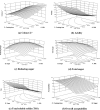Development of ready to reconstitute dehydrated traditional sweet corn halwa
- PMID: 34629512
- PMCID: PMC8479002
- DOI: 10.1007/s13197-020-04930-4
Development of ready to reconstitute dehydrated traditional sweet corn halwa
Abstract
The halwa is a traditional thick sweet generally consumed by millions in the Middle East with more concentrated population in the South and Central Asia. Sweet corn halwa is one such traditional type prepared in the tribal region of middle Gujarat, India. It is one of the dairy delicacies of traditional Indian desserts, which needs to be optimized and dehydrated to assure the availability of the product during off-season and to provide good value in terms of money and enhancement of shelf life. The milk and sugar were added in 50 to 250 g/100 g and 12 to 14 g/100 g respectively for cooking of ingredients for 10 to 20 min to provide value to this traditional product for getting higher return to the entrepreneurs. The optimized sweet corn halwa was dehydrated in thin layers at 60 °C and drying data was fitted thin layer drying models. The physico-chemical properties and sensory evaluation of sweet corn halwa were evaluated during this experiment. The rehydrated product maintained similar overall acceptability, indicating comparable sensory characteristics with fresh sweet corn halwa.
Keywords: Dehydration; Mathematical modelling; Sweet corn; Traditional halwa.
© Association of Food Scientists & Technologists (India) 2021.
Figures
References
-
- Atadesse NS, Beyene GF, Hordofa TB, Hailu AA. Traditional foods and beverages in Eastern Tigray of Ethiopia. J Ethnic food. 2020;7:16. doi: 10.1186/s42779-020-00050-8. - DOI
-
- Basantpure D, Kumbhar BK, Awasthi P. Optimization of levels of ingredients and drying air temperature in development of dehydrated carrot halwa using response surface methodology. J Food Sci Technol. 2003;40(1):40–44.
-
- Bruce DM. Exposed-layer barley drying: three models fitted to new data up to 150 & #xB0;C. J Agric Eng Res. 1985;32:337–348. doi: 10.1016/0021-8634(85)90098-8. - DOI
-
- Dhiman AK, Negi V, Attri S, Ramachandran P. Optimization of instant halwa mix from dehydrated pumpkin and its stability during storage. Int J Agric Sci. 2017;9:4026–4030.
-
- Fennema OE, Damodaran S, Parkin KL. Fennema’s food chemistry. London: Routledge; 2017.
LinkOut - more resources
Full Text Sources


